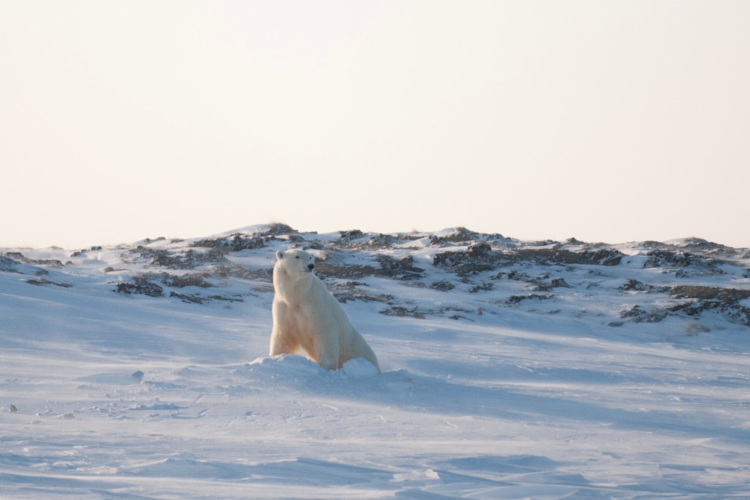“Feast or famine” is a well-known phrase used to describe situations with extreme highs and lows … but no middle ground. For example, in the farming cycle, it’s feast time after selling the harvest, but famine time over the winter, so farmers must portion their harvest income over the whole year to cover the months when no money comes in. When this phrase first appeared in the 1700s, the wording was slightly different: “feast or fast,” which is exactly how we describe the yearly feeding cycle in some polar bear populations. While all wild polar bears experience periods of low food availability, some bears go through seasons of feasting, when they have access to their main seal prey, and seasons of fasting, when they are unable to access seals. These seasons of feasting and fasting are directly linked to the availability of Arctic sea ice.
Sea ice provides hunting opportunities
Over the course of the year, Arctic sea ice naturally shrinks northward during the warm months and increases southward during the cold months. Polar bears use this sea ice as a platform from which they hunt seals. Hunts are most successful when a bear can sneak up on seals lying on top of the ice, or when a bear waits at a hole in the ice for a seal to pop up for a breath. When polar bears have access to seals they FEAST. Polar bears have an amazing ability to build up body fat: they can DOUBLE their body weight when they are hunting seals on the ice. But when the sea ice breaks up and begins to retreat north, the seals go with it and polar bears can’t reach them anymore. This is when polar bears must FAST! Amazingly, this isn’t a one-day juice cleanse. Polar bears can go months without eating any food.
Extreme fast!
In some polar bear populations, like Western Hudson Bay, the sea ice completely disappears during the summer months, leaving these bears to fast on land for as long as four months while they wait for the sea ice to return. In the fall most polar bears eagerly wait on the edge of Hudson Bay for the ice to return, but pregnant females undertake an epic journey to their denning areas where they continue to fast while giving birth and nursing their cubs. It’s normal for these pregnant females to fast for eight months before returning to the sea ice in the spring with their cubs. Their return to the sea ice syncs up with the seal pupping season, the ultimate feasting time for polar bears when lots of fat, naïve seals make easy prey. This is a critical time for hungry polar bear moms to rebuild the fat stores they used to survive their huge fast.
Balancing act
When we look back at the ice coverage in the 1980s, we see that the fasting season for Western Hudson Bay bears averaged 107 days. Comparatively, in the early 2000s, the average fast for Western Hudson Bay bears was 130 days because the sea ice was breaking up earlier in the summer and freezing up later in the fall. The timing of the sea ice break-up and freeze-up is determined by critical temperature thresholds. As climate change warms Arctic temperatures, we see a decrease in the time Western Hudson Bay bears can hunt seals out on the ice and an increase in the time spent fasting on shore. Their “feast and fast” lifestyle means they perform an energy balancing act every year to survive and reproduce. Less feasting time and more fasting time tips the scales for these bears, leading to lower survival rates and fewer cubs. As a result, the Western Hudson Bay population has dropped by 30 percent since the 1980s.
Well-studied polar bear populations like Western Hudson Bay help us better understand the relationship of polar bears and sea ice across the Arctic. To find out how you can join Polar Bears International in helping to save the polar bear’s sea ice home, visit their Act Now page.

















